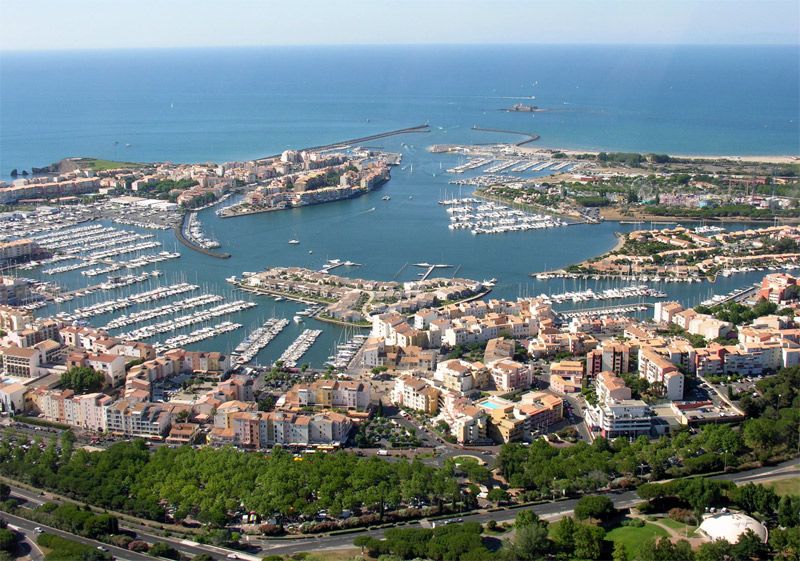The Tour de France 2012, the world’s premier cycling event kicked off last Saturday with the Prologue in Liège, Belgium and will conclude on July 22 with the traditional ride into Paris and laps up and down the Champs-Élysées. Over the next 22 days the race will take its course briefly along the Northwestern coast of France through Boulogne-sur-Mer, Abbeville and into Rouen then into the mountains of the Jura, Swiss Alps and the Pyrenees.
We will be Live Blogging Le Tour 2012 every morning at The Stars Hollow Gazette starting at 7:30 AM EDT. Come join us for a morning chat, cheer the riders and watch some of the most beautiful and historic countryside in Europe.
Saint-Paul-Trois-Châteaux – Le Cap d’Agde 217 km
 is a commune in the Drôme department in southeastern France. The name of the city comes from the Gaul tribe of the Tricastini. Local historians incorrectly concluded that the name was derived from the Latin “Tricastinorum”, meaning three castles.
is a commune in the Drôme department in southeastern France. The name of the city comes from the Gaul tribe of the Tricastini. Local historians incorrectly concluded that the name was derived from the Latin “Tricastinorum”, meaning three castles.
Saint-Paul-Trois-Châteaux is a charming village in the Drôme Provençale, which nestles among vineyards, truffle oaks and fields of lavender, and manages to combine heritage, the land, authenticity and conviviality. Beneath it, the village’s former inhabitants have left behind a number of relics from the prehistoric age, from antiquity and the middle Ages. The mediaeval cathedral, a remarkable example of Roman architecture, is emblematic of the town, sitting majestically in the centre of the village. Inside the city walls, you will discover a host of attractions: mansions, charming little squares adorned with fountains and outdoor cafes. Saint-Paul-Trois-Châteaux is also a gastronomic delight, best known for its truffles, providing 60 per cent of France’s truffles to the market, as well as its wine (AOC wines from Grignan-les-Adhémar) and its many great restaurants. The influence of the village also goes beyond its walls – it’s also known for its children’s book festival, its soul jazz festival, its classical music festival – Les Musicales en Tricastin – and a film festival.
Le Cap d’Agde
 Cap d’Agde is the seaside resort of the town of Agde, France, on the Mediterranean sea in the département of Hérault, within the région of Languedoc-Roussillon. Cap d’Agde is one of the largest leisure ports on the French Mediterranean. Development as a tourist resort started in the 1970s before which time the only buildings at the Cap were small houses typically used for weekends by local people.
Cap d’Agde is the seaside resort of the town of Agde, France, on the Mediterranean sea in the département of Hérault, within the région of Languedoc-Roussillon. Cap d’Agde is one of the largest leisure ports on the French Mediterranean. Development as a tourist resort started in the 1970s before which time the only buildings at the Cap were small houses typically used for weekends by local people.
Set up at the beginning of the 1970s, the Cap d’Agde resort has become, in the space of 40 years, a leading example of a seaside holiday resort with today nearly 175,000 overnight stays. Created by the Interministerial Mission for Territory Management, headed by Pierre Racine, designed by architect Jean Le Couteur, in 2010 it saw its Port Saint-Martin district named Heritage of the 20th Century. Le Cap d’Agde is the emblematic resort of the town of Agde, founded 2,600 years ago by the Greeks of Phocee. A stategic place due to its location in the Gulf of Lion, Agde is situated between the borders of three areas of water: the Mediterranean Sea, the Herault River and the Canal du Midi. Its economy, for a long time centred around the sea and viticulture, is today primarily based on tourism, since it welcomes at the height of the summer season up to 300,000 people. Agde, which means good fortune – from its Greek name Agathe Tyche – has retained many traces that make up its rich heritage including the largest French collection of bronze antiques found in situ and collected together at the Ephebe Museum.

 Welcome to the
Welcome to the 



